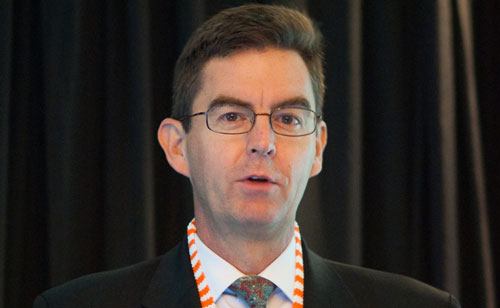
Wireless technology is the most feasible way of getting Africa online. But spectrum is both scarce and hotly contested. There is no single solution to the problem of allocating a finite resource like spectrum, but Microsoft suggests there is much that can be done about using the stuff more effectively.
Despite the fact that Microsoft doesn’t make radio devices or mobile phones — some may be inclined to affix “yet” to the end of that sentence — the company’s senior director for technology policy, Paul Mitchell, says it’s been investigating and playing with spectrum for about a decade. It became interested in the issue when the US began discussing its own move from analogue to digital broadcasting.
Mitchell, speaking at the International Institute of Communications’ annual conference in Johannesburg, says the real innovation in technology is happening in the so-called “unlicensed bands”, which are not in the hands of one particular company or government entity. He says there are “no impediments to innovation” in unlicensed spectrum. It encourages trial and error and this “stimulates thinking about what’s possible”.
Microsoft monitors spectrum usage in bands up to 6GHz from various locations around the world. With the exception of the television broadcasting bands, the company has discovered that “most spectrum is unused most of the time”.
Mitchell says this finding — in conjunction with the rapid progress being made in technologies using unlicensed bands — suggests there are better ways to use spectrum.
Wireless connectivity is particularly important to Africa and Mitchell says the continent is in need of — and well suited to — the reallocation of existing spectrum, particularly bands that will be freed up with the move to digital broadcasting.
“White spaces provide a great opportunity for providing connectivity to rural areas,” he says. “The interesting challenge with white spaces is figuring out what of it you can and can’t use.”
White spaces are the areas between television or radio station broadcasts — “empty spectrum” — that ensure that there is no overlap, or interference, between stations.
Mitchell says Microsoft is working on sensing technologies that “sniff the air”, assessing available spectrum and allocating it on the fly. Until the technology is available commercially — which Mitchell hopes will be in the next year — Microsoft, Google and other companies are using databases populated with all known occupants of various bands in specific regions.
Last week, Microsoft demonstrated a system in Nairobi, Kenya where a device was able to stream video via unused spectrum by “pinging” a database and being assigned a suitable frequency.
Moreover, the demonstration showed the signal could be shifted automatically, without it dropping, if the spectrum it was using was no longer available. Mitchell says trials of this sort of technology are “ongoing in various regions”.
He says the Institute of Electrical and Electronics Engineers and the Wi-Fi Alliance are both working on creating standards for the database. However, the the “real endgame” is to create a “sensing network” so it all happens dynamically. — Craig Wilson, TechCentral
- Subscribe to our free daily newsletter
- Follow us on Twitter or on Facebook




